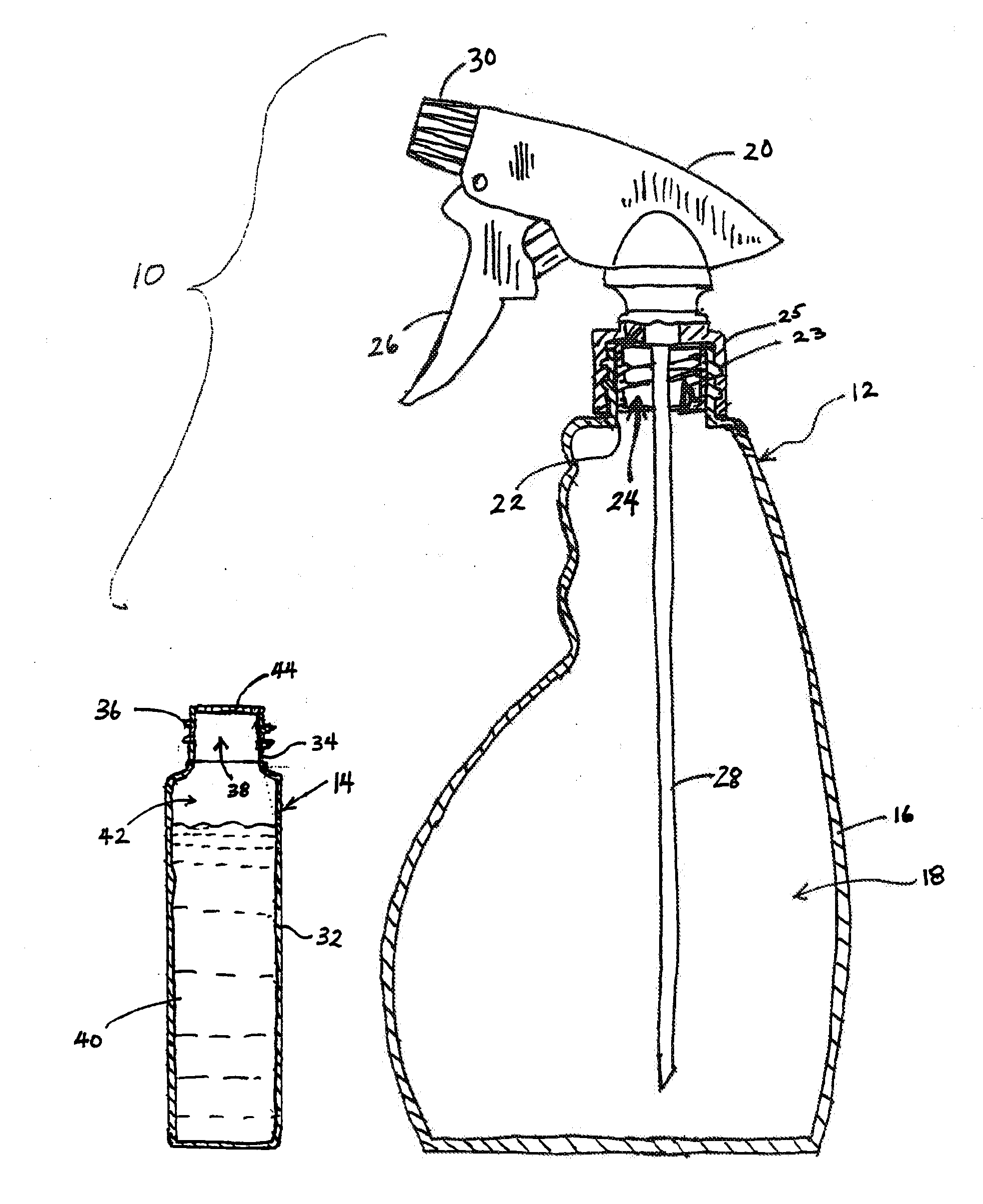Container system
- Summary
- Abstract
- Description
- Claims
- Application Information
AI Technical Summary
Benefits of technology
Problems solved by technology
Method used
Image
Examples
example 1
Glass Cleaner Concentrate Formulation
[0059]A glass cleaner formulation is prepared as a concentrate through mixing and blending of the components in the amounts listed in Table 1.
TABLE 1AmountComponent(% v / v)Deionized water16.02-Amino-2-methyl-1-propanol10.0Ethylenediamine Tetraacetic Acid2.0Sodium lauryl sulfate2.0Dipropylene glycol monomethyl ether5.0Propylene glycol monobutyl ether5.0Isopropyl Alcohol58.515Fragrance1.35Dye0.135
[0060]The glass cleaner formulation concentrate can be subsequently re-constituted in the main container by the consumer to yield a ready to use fluid product. This is achieved by adding water as a diluent to obtain a final water content of from about 95% to 99% by volume based on the total volume.
example 2
Degreaser Concentrate Formulation
[0061]A degreaser formulation is prepared as a concentrate through mixing and blending of the components in the amounts listed in Table 2.
TABLE 2AmountComponent(% v / v)Deionized water22.0Nonionic surfactant blend50.02-Amino-2-methyl-1-propanol10.0Potassium hydroxide7.0Ethylenediamine Tetraacetic Acid4.0Sodium octyl sulfate5.0Fragrance1.89Dye0.11
[0062]The degreaser formulation concentrate can be subsequently re-constituted in the main container by the consumer to yield a ready to use fluid product. This is achieved by adding water as a diluent to obtain a final water content of from about 95%-99% by volume based on the total volume.
PUM
 Login to View More
Login to View More Abstract
Description
Claims
Application Information
 Login to View More
Login to View More - R&D
- Intellectual Property
- Life Sciences
- Materials
- Tech Scout
- Unparalleled Data Quality
- Higher Quality Content
- 60% Fewer Hallucinations
Browse by: Latest US Patents, China's latest patents, Technical Efficacy Thesaurus, Application Domain, Technology Topic, Popular Technical Reports.
© 2025 PatSnap. All rights reserved.Legal|Privacy policy|Modern Slavery Act Transparency Statement|Sitemap|About US| Contact US: help@patsnap.com



